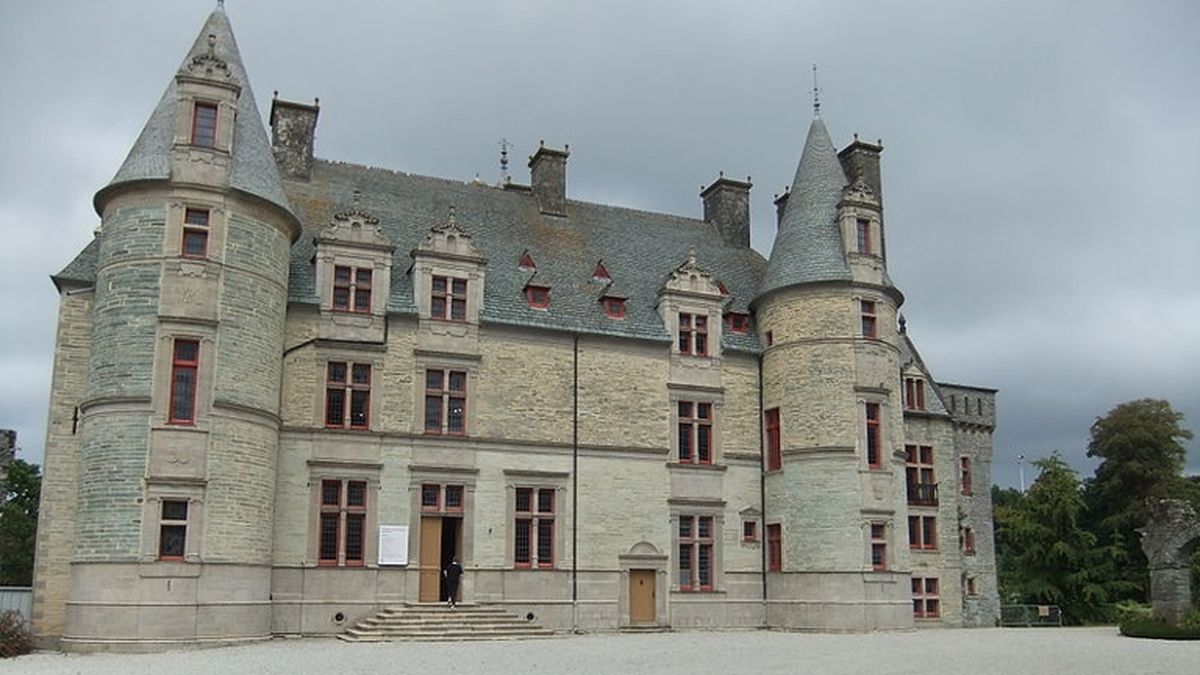 The castle | ©FRAIN50 / CC-BY-SA
The castle | ©FRAIN50 / CC-BY-SAThe Ravalet de Tourlaville
Julien and Marguerite de Ravalet were incestuous brother and sister... a real scandal at that time! We could read that in a period newspaper:
"In 1603 were decapitated in Paris a rich Norman gentleman named Tourlaville with his young sister, 20 years-old, because they were incestuous: the poor father begged mercy to the king for them. But the king refused..."
Our story began with Jean II de Ravalet, lord of Tourlaville and abbot of Hambye. He raised the castle in 1570 on the foundations of an old 10th century fortress. The Ravalet was an old family from Brittany, who came in Normandy in 1480. The first member was Jean de Ravalet, a 20 years old squire who was Joan of Arc’s comrade in arms.
He left Fougères and came in Cherbourg, in Normandy. When the building site ended, in 1575, Jean II gave the castle to his nephew Jean III, Julien and Marguerite's dad: it’s a nice castle with pretty mullioned windows and huge turrets.
We have about 20 rooms, with two vast rooms on the ground floor and on the first floor.
You can visit four rooms (including Marguerite’s bedroom): ask the castle for further information! In short: Jean III and his wife, completely crushed by the drama, changed their name into Tourlaville and made pilgrimages, gave money to the poor...
Turmoil and dramas
Charles de Franquetot, Ravalet family’s nephew, owned the estate in 1654. He probably ordered the famous painting of Marguerite (made by Mignard) we can see in the living-room on the first floor. We can see her in the middle of a Norman landscape, with the castle backdrop.
A small spaniel dog stands by her side: last symbol of fidelity... She stands in the middle of blindfold cupids: she pushes them away, except one. And we can read this sentence: Un me suffit, "One is enough".
In several rooms, we find sentences painted on the wall, as for instance Les deux n'en font qu'un ("two make only one"), Ainsi puissé-je mourir! ("So I could die") or Même en fuyant on est pris ("Even if we run away, we'll be trap"), Plusieurs sont atteints de ce feu Mais ne s'en guérit que fort peu ("Several persons are stuck by this fire, but few of them recover")... echoing Julien and Marguerite's incestuous love.
The tradition even says one evening of March 1661, Franquetot was murdered by his domestic in his own chair, as he was daydreaming on Marguerite’s portrait... a kind of curse, maybe?
Then the castle fell to Crosville family in 1713, then to the Fouquet de Réville in 1748. During the French Revolution, the castle's archives and documents linked to the cursed lovers were burnt... In the middle of the 19th century, the new owner Edouard de Tocqueville transformed the castle into a farm.
His son René laid out the nice park between 1872 and 1885. But he spent lot of money for that, so he was forced to sell the estate in 1910... Cherbourg city finally owned the castle in 1935.
